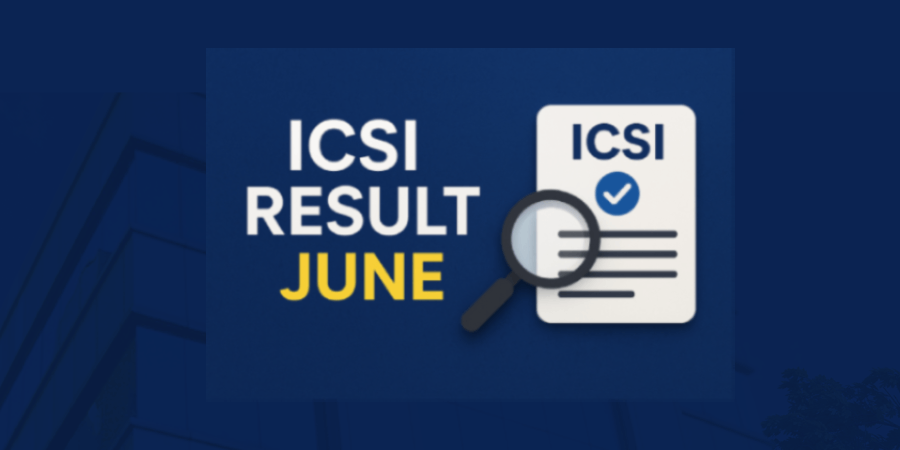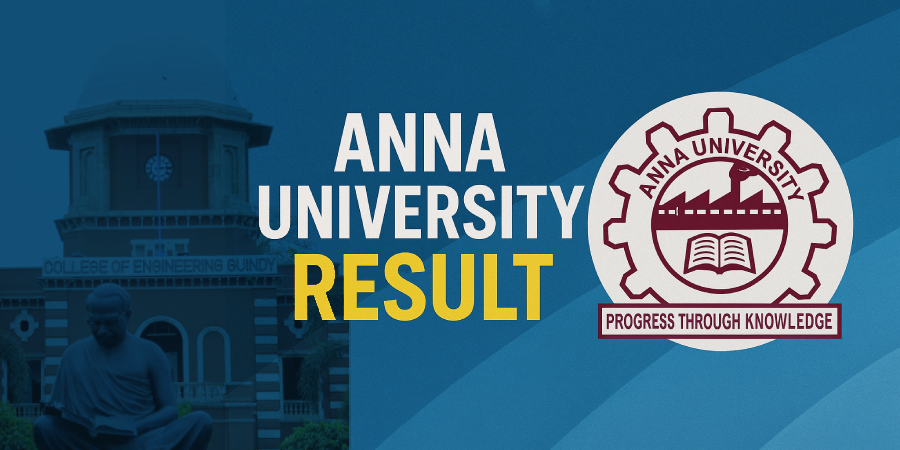Like do you ever had a thought about doing an MBA but then asked yourself like, how do you start preparing for the MBA entrance exam? Sounds like a really big question, right? Well, you’re not the only one thinking about this! With thousands of students in India competing for seats in top business schools, its way more natural to think where to begin and how to crack that MBA entrance exam.
Don’t worry, we’ve got you covered. In this blog, we’ll break down everything like how to start preparing for the MBA entrance exam, best strategies, and the resources you need to succeed. No fluff, just practical tips to help you get into your MBA journey!
What Are MBA Entrance Exams?
Basically, MBA entrance exam is a test that helps business schools decide if you really have what it takes to make it in a business management program. As these exams check your skills in math, logical reasoning, English, and general knowledge, which are all important for handling business challenges.
Unlike your regular college exams, MBA entrance tests are time based and competitive, meaning you’ll have to answer tricky questions quickly. They don’t just test what you know but also how well you can think under pressure. So, if you’re planning to get into a top B-school, clearing one of these exams is your first step.
And The Best Part? You Have Options!
There’s no single MBA entrance exam in India, you get to choose! The most common one is CAT, which is accepted by all IIMs and many other top colleges. But if you want more flexibility, exams like XAT, MAT, SNAP, and GMAT offer different formats and multiple chances to apply.
And the good news is that these exams happen multiple times in a year, so you can plan and attempt them when you’re ready. Plus, with so many options, you don’t have to put all your hopes on just one test.
Popular MBA Entrance Exam
So, when it comes to getting into a top Business school, picking the right MBA entrance exam is crucial to be honest! Like Different exams have different formats, difficulty levels, and acceptance criteria. While CAT is the most widely known and accepted, there are several others that can get you into top management institutes.
To make things easier, here’s the details of some of the most popular MBA entrance exams in India that you should know about:
Exam Name | Accepted By | Exam Frequency | Difficulty Level |
CAT (Common Admission Test) | IIMs, FMS, SPJIMR, MDI & more | Once a year (Nov) | High |
XAT (Xavier Aptitude Test) | XLRI, XIMB, IMT & others | Once a year (Jan) | High |
IIFT (Indian Institute of Foreign Trade Exam) | IIFT Delhi, Kolkata, Kakinada | Once a year (Dec) | High |
NMAT (NMIMS Management Aptitude Test) | NMIMS, KJ Somaiya, SPJIMR & more | Once a year (Oct-Dec) | Moderate |
SNAP (Symbiosis National Aptitude Test) | Symbiosis Institutes (SIBM, SCMHRD) | Multiple times (Dec-Jan) | Moderate |
CMAT (Common Management Admission Test) | AICTE-approved B-schools | Once a year (Jan) | Easy-Moderate |
GMAT (Graduate Management Admission Test) | ISB, SPJIMR, Global B-schools | Multiple times a year | High |
Each of these exams has a different format, number of sections, and scoring pattern. Some, like CAT, XAT, and IIFT, are tougher and focus more on logical reasoning, data interpretation, and verbal ability, while others, like NMAT and CMAT, offer a sensible difficulty level and allow multiple attempts. No matter which exam you pick, preparing strategically is the key to cracking it.
How Do You Start Preparing For The MBA Entrance Exam?
1. Know what you’re Signing Up For
First things first, figure out which exam you’re targeting, CAT, XAT, IIFT, NMAT, SNAP, or something else. Each one has a slightly different pattern. Some have General Knowledge (IIFT, XAT), some don’t. Some let you take multiple attempts (NMAT), while others are a one-shot deal (CAT, XAT). Check the syllabus and exam structure before you start studying.
2. Take a Mock Test (Yes, Right Now!)
I know it sounds scary, but trust me, take a mock test before you even start studying. It’ll show you where you stand. You’ll immediately known whether math is your weak spot or if reading comprehension is killing your time. This way, you can plan your prep smartly instead of wasting time on things you already know.
3. Make a Study Plan That You’ll Actually Follow
Don’t go overboard with unrealistic schedules. If you’re working, 2–3 hours a day is enough. If you’re a student, aim for 4–5 hours. Start with basics, then move to practice, and finally, mock tests + revisions. Keep Sundays for full-length mocks and chill time—your brain needs a break too!
4. Strengthen Your Basics First
Before you start solving those tough quant questions, get your basics right. If maths isn’t your thing, go through NCERT books (Class 6–10) to brush up. For Logical reasoning, start with puzzles and seating arrangements. For Verbal, read newspapers and focus on RC (Reading Comprehension) and vocabulary.
5. Solve Past Year Papers (Your Best Friend)
Most exams repeat question types, especially CAT and XAT. Solving previous years’ papers will give you a clear idea of what’s important and what isn’t. Aim to finish at least 5–10 years’ worth of past papers before the exam.
6. Give Regular Mock Tests and Analyse Them
Mocks aren’t just for practice, they teach you time management, question selection, and exam strategy. Start with one mock per week, then increase to two or three closer to the exam. But here’s the real deal—analyse every mock properly. See where you’re losing marks and work on those areas.
7. Work on Your Speed and Accuracy
MBA entrance exams aren’t just about knowing stuff; they’re about solving fast and solving right. Learn shortcuts for quant, practice mental calculations, and try to solve questions within a time limit. Don’t spend 5 minutes on one tricky question move on and come back later!
8. Revise Smartly
No matter how much you study, if you don’t revise, you’ll forget things. Keep a formula book for quant, important tricks for reasoning, and a vocab list for verbal. Revise them regularly instead of cramming everything at the last moment.
9. Stay Consistent and Don’t Lose Motivation
This isn’t just a one week sprint, like it’s a 3, 6 month routine. There will be days when mock scores go down or when you feel stuck. Don’t quit. Even top CAT scorers have bad mocks, but they keep going. Find a study buddy or join an online group to stay motivated.
Exam Pattern For MBA Entrance Exam
Exam | Conducting Body | Exam Pattern & Duration |
CAT (Common Admission Test) | Indian Institutes of Management (IIMs) | Verbal Ability & Reading Comprehension, Data Interpretation & Logical Reasoning, Quantitative Aptitude. Duration: 2 hours |
XAT (Xavier Aptitude Test) | XLRI Jamshedpur | Verbal & Logical Ability, Decision Making, Quantitative Ability & Data Interpretation, General Knowledge. Duration: 3 hours |
GMAT (Graduate Management Admission Test) | Graduate Management Admission Council (GMAC) | Analytical Writing, Integrated Reasoning, Quantitative, Verbal. Duration: 3 hours 7 mins |
MAT (Management Aptitude Test) | All India Management Association (AIMA) | Language Comprehension, Mathematical Skills, Data Analysis & Sufficiency, Intelligence & Critical Reasoning, Indian & Global Environment. Duration: 2.5 hours |
SNAP (Symbiosis National Aptitude Test) | Symbiosis International University | General English, Quantitative, Data Interpretation & Data Sufficiency, Analytical & Logical Reasoning. Duration: 1 hour |
CMAT (Common Management Admission Test) | National Testing Agency (NTA) | Quantitative Techniques & Data Interpretation, Logical Reasoning, Language Comprehension, General Awareness, Innovation & Entrepreneurship. Duration: 3 hours |
MAH CET (Maharashtra Common Entrance Test) | State Common Entrance Test Cell, Maharashtra | Logical Reasoning, Abstract Reasoning, Quantitative Aptitude, Verbal Ability & Reading Comprehension. Duration: 2.5 hours |
NMAT (NMIMS Management Aptitude Test) | Graduate Management Admission Council (GMAC) | Language Skills, Quantitative Skills, Logical Reasoning. Duration: 2 hours |
IBSAT (ICFAI Business School Aptitude Test) | ICFAI Foundation for Higher Education | Verbal Ability, Reading Comprehension, Quantitative Aptitude, Data Adequacy & Interpretation. Duration: 2 hours |
IIFT (Indian Institute of Foreign Trade Exam) | National Testing Agency (NTA) | Verbal Ability & Reading Comprehension, Quantitative Aptitude, Data Interpretation & Logical Reasoning, General Knowledge. Duration: 2 hours |
ATMA (AIMS Test for Management Admissions) | Association of Indian Management Schools (AIMS) | Analytical Reasoning, Verbal Skills, Quantitative Skills. Duration: 3 hours |
Important things you need to know though:
- If you’re aiming for IIMs, CAT is the main exam to crack.
- For international opportunities, GMAT is a great choice.
- If you want multiple attempts, NMAT allows up to 3 retakes.
- For no negative marking, check out MAH CET, NMAT, and IBSAT.
- Fast-paced exams like SNAP and NMAT require speed and accuracy.
How To Apply For MBA Entrance Exam
Applying for an MBA entrance exam is a little tough but don’t worry! it’s super easy, and you can do it all online. Here’s what you can do:
Step 1: Pick the Right Exam
First things first, you have to figure out which exam works best for you. If you want IIMs, go for CAT. Like if you Want Symbiosis? Take SNAP. NMAT is for NMIMS, and GMAT works for global B-schools. Just check where you wanna go and pick accordingly.
Step 2: Check if you’re Eligible
Most exams need you to have a bachelor’s degree with at least 50% marks (45% if you’re from a reserved category). If you’re in your final year, no stress, you can still apply. Some exams, like IIFT, might have extra rules, so always check the official website.
Step 3: Register Online
Go to the official website of the exam, sign up, and create your login ID. They’ll ask for your name, email, phone number, and a few other details.
Step 4: Fill Out the Application Form
Once you’re in, fill up the form with your personal info, education details, and preferred exam center. If you’re applying for NMAT, you even get to pick your exam date! Pretty cool, right.
Step 5: Upload Your Documents
You’ll need to upload a few things, your 10th and 12th mark sheets, a passport-size photo, your signature, and an ID proof. If you’re applying under a reserved category, you might need extra documents.
Step 6: Pay the Exam Fee
This is the final step! Pay the exam fee online through UPI, debit/credit card, or net banking. CAT costs around INR 2,400, XAT INR 2,100, and GMAT is the most expensive at around INR 22,800. Some exams give discounts to SC/ST candidates, so check before you pay.
Step 7: Download Your Admit Card
Once your application is approved, your admit card will be available for download. Print it out, it’s your entry ticket for the exam.
Step 8: Start Preparing!
Now that you’re all set, it’s time to hit the books! Solve mock tests, plan your study schedule, and stay consistent. The harder you work, the better your chances of getting into a top Business school.
Time Management & Exam Strategy
Well, the key is to study smart, not just hard. Here’s how you can manage your time and crack the exam like a professional one:
- Understand the Exam Format
Every exam is different, so don’t just jump into studying. Check the sections, number of questions, time limit, and marking scheme. For example, CAT has 66 questions in 120 minutes, while NMAT gives you 108 questions in the same time.
- Make a Study Plan That Works for You
Don’t try to study 12 hours straight, you’ll burn out. Instead, set a daily study schedule that balances all subjects. Maybe 3-4 hours on weekdays and a little extra on weekends. Mix things up to stay motivated!
- Work on Weak Areas, but Don’t Ignore Strengths
If you’re great at Quant but struggle with Verbal, don’t just stick to math—spend extra time fixing your weak spots. But also keep practicing what you’re already good at.
- Mock Tests Are a Game-Changer
Start taking mock tests as soon as you cover the basics. This helps you get used to the actual exam pressure. Don’t just take them, analyse your mistakes and improve with every test.
- Learn Time-Saving Tricks
MBA entrance exams are all about speed. Learn shortcut methods for Quant, improve your reading speed for Verbal, and use elimination tricks for Logical Reasoning.
- Don’t Waste Time on One Question
If a question is too tough, skip it and move on. Don’t let one tricky question eat up your precious time, come back to it later if you can.
- Stay Cool on Exam Day
No matter how much you prepare, stress can mess things up. Stay calm, manage your time wisely, and don’t let a tough question shake your confidence. You got this!
Best Books For MBA Entrance Exam Preparation 2025
Picking the right books is really important for MBA exam prep. Like as you know that a good book explains concepts in a simple way and gives plenty of practice questions to help you get better. Here is a list of best books recommended by experts and toppers for Quantitative Aptitude, Logical Reasoning, Data Interpretation, and Verbal Ability.
Book Title | Author/Publication |
NCERT Mathematics (Class 6-10) | NCERT |
How to Prepare for Quantitative Aptitude for CAT | Arun Sharma |
Quantitative Aptitude for Competitive Examinations | Abhijit Guha |
Quantitative Aptitude Quantum CAT | Sarvesh Verma |
Quantitative Aptitude for CAT | Nishit Sinha |
Quantitative Aptitude | RS Aggarwal |
A Modern Approach to Logical Reasoning | RS Aggarwal |
How to Prepare for Logical Reasoning for CAT | Arun Sharma |
How to Prepare for Data Interpretation for CAT | Arun Sharma |
Logical Reasoning and Data Interpretation for CAT | Nishit Sinha |
Data Interpretation | Nishit Sinha |
CAT Data Interpretation & Logical Reasoning | Gautam Puri |
How to Prepare for Verbal Ability and Reading Comprehension for CAT | Arun Sharma & Meenakshi Upadhyay |
Verbal Ability and Reading Comprehension for CAT | Nishit Sinha |
Word Power Made Easy | Norman Lewis |
High School Grammar and Composition | Wren & Martin |
30 Days to a More Powerful Vocabulary | Wilfred Funk & Norman Lewis |
Tips For Staying Motivated And Focused
Set small, clear goals
Instead of saying, “I need to finish the syllabus,” break it into smaller, manageable tasks. For example, aim to complete one chapter or solve 20 questions daily. Small wins keep you motivated.
Follow a study schedule that works for you
Make a plan that suits your routine. Studying for long hours without breaks will only exhaust you. Short, focused study sessions with breaks in between are more effective.
Stick to the best study materials
Don’t overload yourself with too many books and online resources. Pick the most recommended ones and master them. Quality over quantity always wins.
Practice mock tests regularly
Mock tests help you get comfortable with the exam pattern and improve your time management. Take them seriously and analyse your mistakes to avoid repeating them.
Stay away from distractions
Social media, notifications, or even unnecessary breaks can waste a lot of time. Find a quiet study space, put your phone on silent, and focus completely during study hours.
Join a study group
Discussing concepts with others makes learning fun and helps you understand topics better. Just make sure the group stays focused on studying and not just casual chatting!
Keep yourself healthy
Eat well, sleep properly, and exercise a little. A fresh mind will always grasp concepts faster than a tired one.
Stay positive and don’t give up
Some days will be tough, but don’t let them demotivate you. Remind yourself why you started this journey and keep pushing forward.
End Words
So, that’s a wrap guys! And preparing for an MBA entrance exam takes a lot of dedication, smart planning, and consistency, but if you stay focused, it’s totally possible though. If you’re serious about getting into a top Business school you have to just stick to your plan, keep practicing, and don’t lose confidence. Hope this blog helped clear things up for you and now go ace that exam!
FAQs
Q1. Which is the toughest MBA entrance exam in India?
Ans:CAT is the toughest due to its tricky questions and high competition. XAT is also challenging because of its Decision-Making section.
Q2. Can I prepare for an MBA entrance exam in 3 months?
Ans:Yes, but you’ll need a smart plan. Focus on important topics, take mock tests regularly, and improve your speed and accuracy.
Q3. Are online coaching classes helpful?
Ans:Yes, they’re great if you need flexibility. Many platforms offer recorded lectures, live sessions, and mock tests to help with preparation.
Q4. Do all MBA exams have negative marking?
Ans:No. Exams like NMAT, IBSAT, and MAH CET don’t have negative marking, while CAT, XAT, and SNAP do.
Q5. Is work experience necessary for an MBA?
Ans:Not always. Many colleges accept fresh graduates, but work experience can give you an edge, especially for executive MBA programs.

















